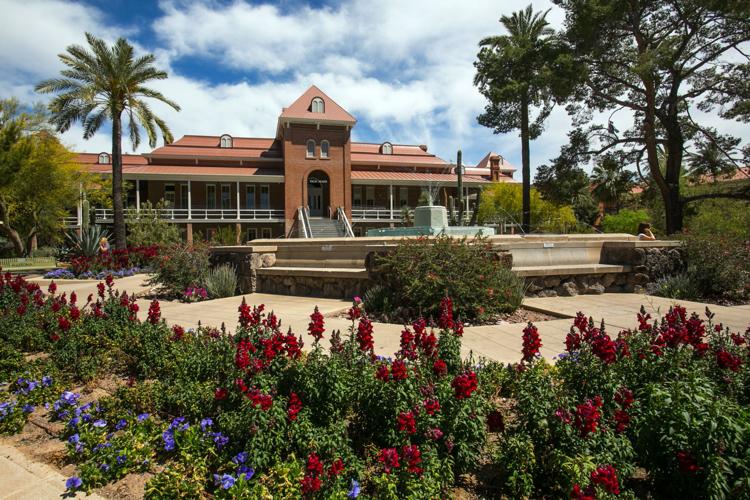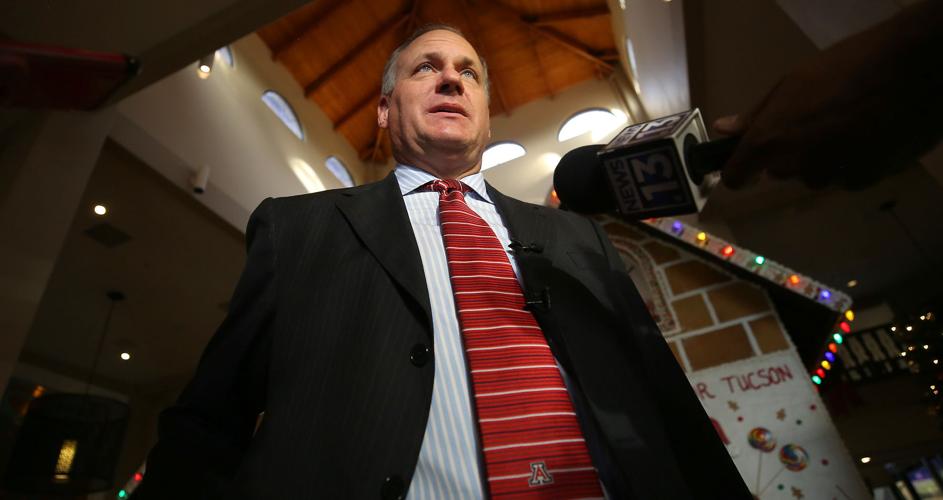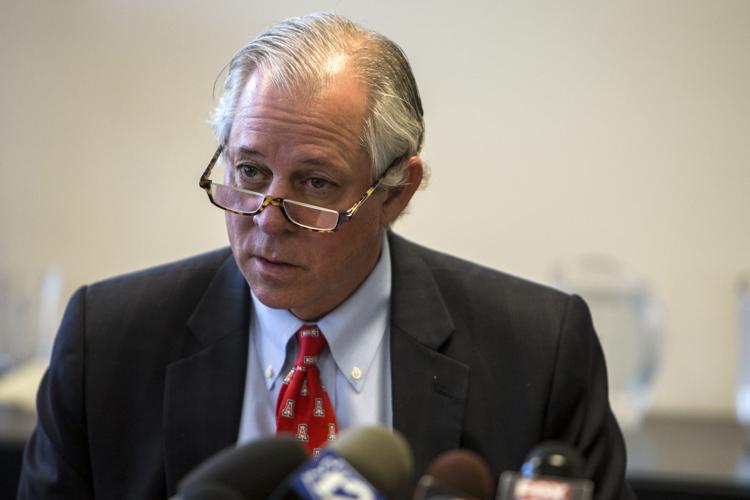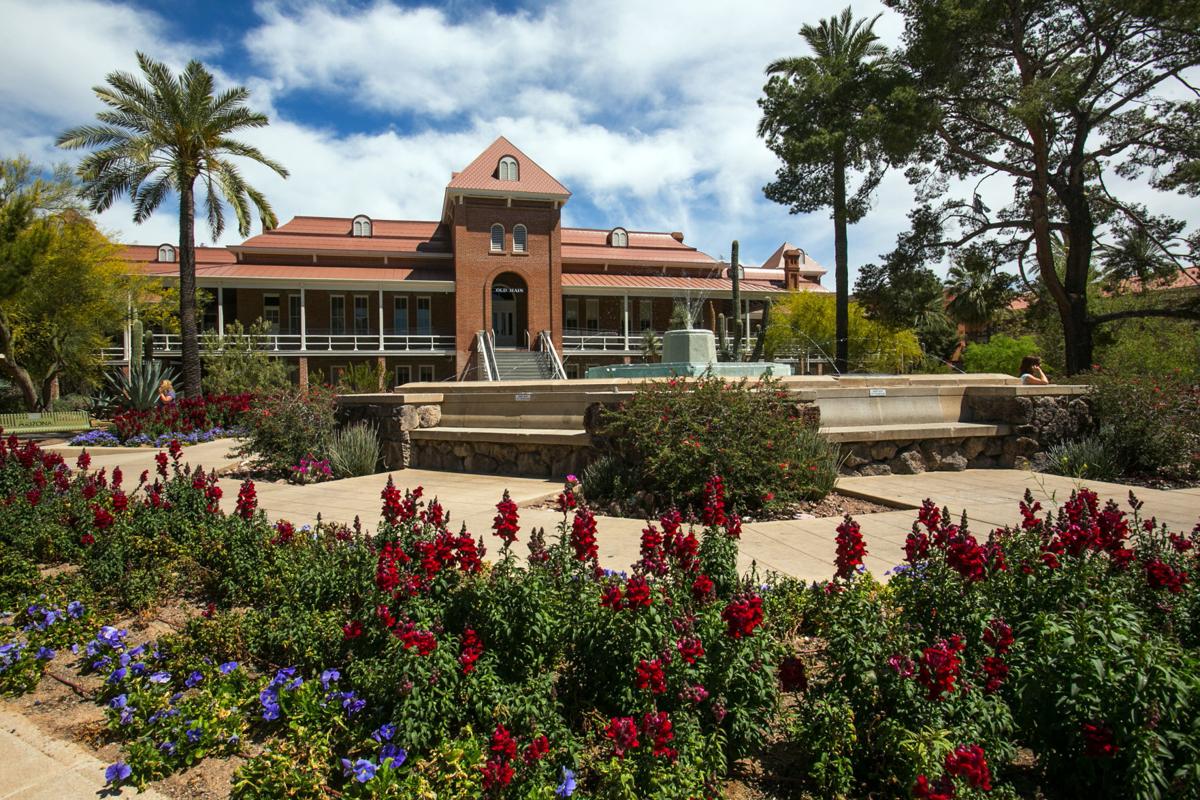University of Arizona police investigated 16 student-athletes and athletic department employees for sexual assault or dating violence over a six-year span beginning in 2012, according to a document produced in court by the school’s attorney.
The document is part of the discovery process in one of two federal Title IX lawsuits levied against the UA. School officials are accused of mishandling reports that former football player Orlando Bradford was abusing women. Tucson police arrested Bradford in September 2016 and charged him with more than a dozen domestic-violence-related offenses. He pleaded guilty to two felony counts of aggravated assault and is serving a five-year prison sentence.
One of Bradford’s victims filed a lawsuit against the UA a year ago, saying the school knew about his violent behavior and failed to take appropriate action to protect other students. It cited a campus police report from April 2016, when another woman reported abuse by Bradford to campus police and an athletic department official. Bradford wasn’t charged with a crime in connection with the complaint. He soon moved into a house off campus with other members of the football team. Bradford was arrested five months later after two other women said he repeatedly beat and choked them while his roommates watched.
In January, a second Bradford victim filed her own federal lawsuit.
Both lawsuits have since been amended. The first has added former football coach Rich Rodriguez as a defendant. The second one alleges that Wildcats football players gang-raped female students and support staffers in the years leading up to Bradford’s arrest. The list of UAPD investigations was the result of a discovery request in the second suit. Lawyers for the victim asked for investigative records from UA police for all sexual assault, sexual harassment and dating violence incidents involving “student athletes, athletic department employees and athletic department coaches,” according to a transcript of the hearing obtained by the Star.
The victim’s attorneys previously claimed there is a culture of violence within the UA football program, but now say they have reason to believe “that culture of violence may be broader” and span across multiple sports. They have also asked for access to the accusers’ identities to determine whether the investigations were accurately completed, saying that they have concerns that the school may have been giving preferential treatment to student-athletes “or otherwise not responding the way that it should under Title IX.”
Under federal Title IX laws, universities are required to ensure that students receive an education free from sexual harassment, including abuse and dating violence.
The judge ordered that the information be produced in the form of a chart that includes the basic facts, what the charges were, the investigative process and who was interviewed, but requested that the identities of the accusers and of those accused not be disclosed yet. Student-athletes accused of sexual or dating misconduct have instead been identified by the sport they play.
The chart was produced on Sept. 12, and covers all relevant investigations of athletes and athletic department employees between Jan. 1, 2012 and Dec. 31, 2017, court documents show. The timeline coincides with Rodriguez’s tenure as Arizona’s coach. He was hired Nov. 22, 2011, and fired on Jan. 2. Contents of the chart were not immediately available.
On Monday, the judge ordered that UA lawyers produce all police reports connected with the 16 investigations along with any documents not in the investigative files that “address the issues of what, if any, broader response there might be by the football program, the athletic department and the university to these types of complaints.”

Rodriguez’s attorneys reject ‘silly’ claim
Rodriguez’s attorneys filed a motion to dismiss him from the first federal suit in August, arguing that he could not be held accountable for the actions of all his football players. Arizona’s roster typically includes 100 or more players. Lawyers said Rodriguez could not possibly be expected to keep up with all of them — even though, according to the victim, Bradford openly bragged about the incident in the locker room.
“One cannot seriously believe that everything said by team players and overheard by Athletic Department staff and assistant coaches will be brought to the head coach’s attention,” Rodriguez’s attorneys said in the nine-page document.
Rodriguez said the claims to connect him to Bradford were a misdirected attempt to frame him. Rodriguez’s attorneys said he did not commit any crimes, and said there is no evidence suggesting he was an accomplice to Bradford.
Rodriguez’s motion was ultimately struck by the court because of improper filing procedures. As of now, he remains a defendant in the case.
Bradford rushed 47 times for 308 yards and three touchdowns as a freshman in 2015 and was set to receive a larger role as a sophomore. Rodriguez and former offensive coordinator Calvin Magee repeatedly called Bradford a “co-starter” alongside Nick Wilson as the team prepared for the 2016 season. Attorneys for the victim said Rodriguez did it as a power move, because the starter label would “increase Bradford’s presence and power on campus.” Rodriguez’s lawyers called the claim “downright silly.”
Attorneys are starting to take depositions in both cases. Erika Barnes, the UA’s executive senior associate athletic director, will be deposed next month; so will Susan Wilson, a UA Title IX senior investigator.
Judges in both cases have ordered that settlement talks take place by April 5. The second case is tentatively set to go to trial in December 2019.

University of Arizona president Robert Robbins speaks during a press conference after an Arizona Board of Regents executive session in March.
Search for Title IX director continues
In June, after a months long review by Title IX attorney Natasha Baker, UA President Robert C. Robbins announced sweeping changes to the university’s policies regarding sex abuse and dating violence.
Four months later, the UA still hasn’t hired a full-time Title IX director.
Mary Beth Tucker continues to act as the UA’s Title IX coordinator, one of her many duties on campus. She is co-chairing the search committee for a new director with UA Senior Vice President John Dudas, university spokesman Chris Sigurdson told the Star.
“In the meantime, there has been more funding to support Title IX investigators and investigations,” Sigurdson said in an email.
The UA has filled several other positions created as a result of Baker’s review, including two survivor advocates in the Dean of Students Office and a respondent services coordinator who assists students accused of Title IX violations. The UA hopes to have a new Title IX director selected by the end of the month.
“Some of the other developments, such as enhanced training and prevention materials, are on hold for the new director to review,” Sigurdson said.
Details of Baker’s investigation or its findings will not be made available to the public, as the UA cited attorney-client privilege in response to a records request to the Star. The Star requested the information in May and again in August; the university responded last week after a third request.
UA officials did turn over billing totals for Baker’s firm, Hirschfeld Kraemer LLP. They showed that the university spent more than $124,000 for Baker’s work over the span of five months.
The UA previously said that Baker interviewed more than 55 people and reviewed thousands of documents before recommending policy changes.







